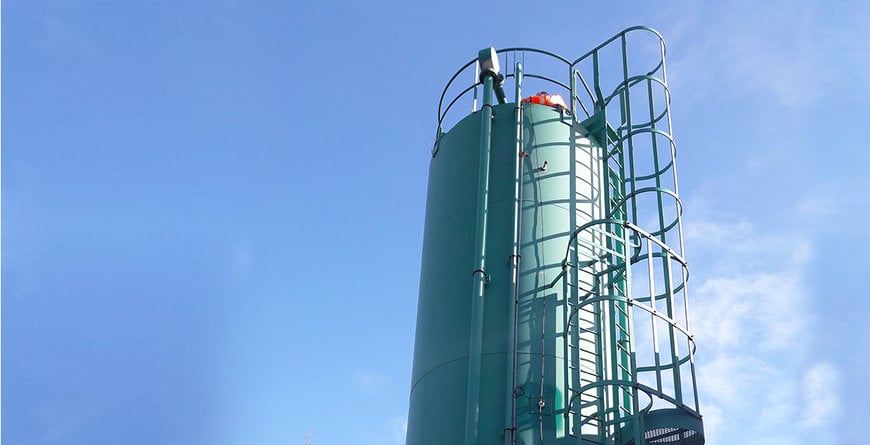railway-international.com
22
'22
Written on Modified on
MONITORING AND PREDICTION OF SAND LEVELS IN SILOS
The large majority of rail rolling stock, trains, tramways and subways use sand to increase wheel-rail adhesion for traction and braking. Some conditions significantly decrease vehicle adhesion, such as in the fall, when the presence of plant residues and high humidity make rails ‘greasy.’.

In this context, using ‘sandboxes’ to add sand between wheels and rails allows to increase the coefficient of friction and therefore to mitigate adhesion deficiencies.
Main Consequences: An Immobilised Fleet and Degradation of the Service
As a security device, sandboxes and their reservoirs must always be in operational condition. There are therefore regularly filled with calibrated, dry sand. Storage silos make it possible to supply an entire distribution network.
Unfortunately, sand levels in silos are not monitored in real time. Moreover, consumption via the distribution and filling network is also inaccurate. Without monitoring, in the event of an empty silo, it is impossible to fill rolling stock sandboxes.
As a result
- The fleet is immobilised;
- The service is degraded;
- Penalties may apply.
Monitoring and Prediction of Sand Levels as a Major Concern
To make up for this lack of real-time monitoring, Stimio offers an end-to-end IoT solution allowing to collect data on sand levels, send it and display it on a dashboard as a part of Oxygen Asset Management, along with a notification and business alerts system.
Our prediction tool allows to predict when an excessively low level will be reached. Our clients’ teams are therefore alerted upstream, enabling optimal flow and order management.
At the top of each silo, a radar sensor measures the sand level and sends it via a 4 ‑20 mA uplink to our IoT Railnode sensor located at the base of the silo. Sand level measurements are taken at the frequency desired by the client.
The data collected are sent over the cellular network to our Oxygen Asset Management data processing and display platform.
An efficient supervision platform to follow and predict
The following is a detailed breakdown of the functionalities offered by our sand silo monitoring solution:
To make up for this lack of real-time monitoring, Stimio offers an end-to-end IoT solution allowing to collect data on sand levels, send it and display it on a dashboard as a part of Oxygen Asset Management, along with a notification and business alerts system.
Our prediction tool allows to predict when an excessively low level will be reached. Our clients’ teams are therefore alerted upstream, enabling optimal flow and order management.
At the top of each silo, a radar sensor measures the sand level and sends it via a 4 ‑20 mA uplink to our IoT Railnode sensor located at the base of the silo. Sand level measurements are taken at the frequency desired by the client.
The data collected are sent over the cellular network to our Oxygen Asset Management data processing and display platform.
An efficient supervision platform to follow and predict
The following is a detailed breakdown of the functionalities offered by our sand silo monitoring solution:
- Displays the filling level of each silo, from 0% to 100%, in intervals of 10%.
- Ability to receive an SMS or email alert when the filling level drops below a configurable threshold.
- Ability to consult the filling level of each silo on a smartphone.
- Ability to consult the global consumption statistics for each silo.
- Last of all, ability to predict the date on which the configurable threshold will be reached.
This solution comes with multiple advantages:
- Decreased maintenance costs
- Increased service availability by preventing operating losses
- Anticipation of resupply orders
- Monitoring of the quantities delivered
- Consumption statistics to identify overconsumption

